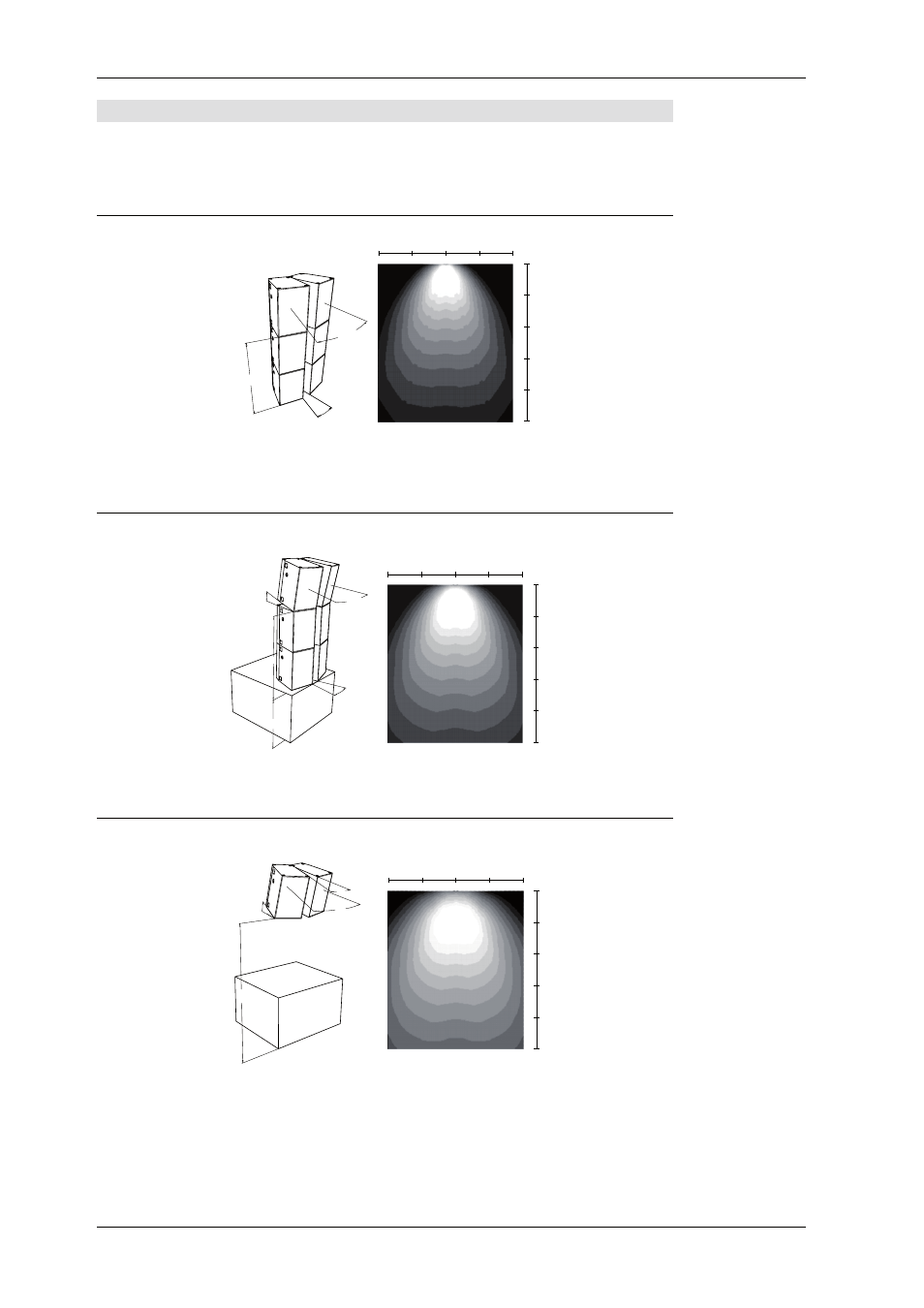KLING & FREITAG K&F ACCESS T9 User Manual
Page 50

User’s Manual
ACCESS SYSTEM
KLING & FREITAG GMBH ©1995-2009
Version 6.0, 17.03.2009
Page 50 of 60
15.2
Sound Pressure Dispersion in Relation to the Position
It is often appropriate to use a flying speaker system because the sound can disperse
more evenly throughout the room. Systems, which are set-up on the ground, lead to
stronger volume differences between the front and rear listeners than with a flown
system. This is shown in the illustration of the different system set-ups. (here 2 x T5)
2 x T5 on two bass systems.
1,8m
20
°
30°
10
10
20
30
40
20
30
40
50
m
The high-mid system has the necessary base height (always above face level) to irradiate
an event with a standing audience. The difference in loudness level between the front
and rear seats is relatively large. This form of ‘‘stacking’’ is, therefore, better suited for
smaller rooms or dance floors in clubs.
2 x T5 on stage and two bass systems.
St
ag
e
1,
2m
1,8
m
10°
20
°
30°
10
10
20
30
40
20
30
40
50
m
The additional stage height and the slight tilt of the high-mid systems make it possible
to reduce the sound level difference between the front and rear seats. If feasible, this
version is preferable to the previously described version (especially in mid-sized rooms).
2 x T5 flown and tilted.
15
°
10
10
20
30
40
20
30
40
50
m
5,5m
20°
30°
Because of the tilt and height of the high-mid systems it is possible to achieve the most
even distribution of sound with the lowest sound level difference between the front and
rear sets. This version should, if feasible, always be used when there is a large audience
area to be covered.
